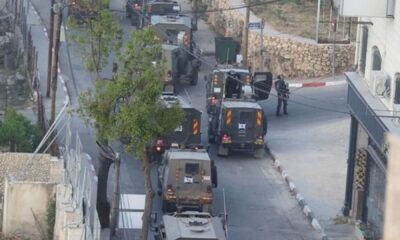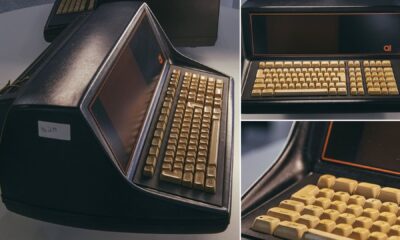Great Britain
Southampton’s Russell Martin Praises West Brom Win as Best of the Season
Martin hailed Southampton’s 2-0 victory at West Bromwich Albion as their best win of the Championship season so far.

Southampton boss Russell Martin celebrated his team’s 2-0 win over West Bromwich Albion claiming it to be their best victory in the Championship so far. Ryan Fraser and David Brooks scored for the Saints, propelling them back into second place in the standings.
The win came just after The Saints had a notable disappointment, losing a club-record 25-game unbeaten streak on Tuesday with a 3-1 defeat at Bristol City but managed to redeem themselves against the Baggies.
Saints’ manager, Russell Martin, highlighted the significance of this victory, saying that his team proved their worth in response to Tuesday’s loss. He was ecstatic about the aggression shown by his side and emphasized the importance of coming back stronger after a defeat. Martin praised the fans for their support and stated that they hope to continue giving their all moving forward.
Southampton dominated the match from the beginning and secured an early lead thanks to a volley by Ryan Fraser after Corberan’s dismissal due to misconduct. Despite Albion threatening a comeback, David Brooks sealed the points for the Saints with a goal 17 minutes before the end of the game.
Shilen Patel’s takeover of West Brom next week brings positivity to the club despite the disappointing result. Townsend expressed hopes of using this momentum for their upcoming games to secure a spot in the play-offs. Meanwhile, Martin expressed gratitude for the tremendous reaction from his team following their midweek loss.
Great Britain
Israeli Forces Detain Over 7,000 Palestinians from West Bank Since October
Israeli occupation forces have detained over 7,000 Palestinians in the West Bank since October amidst their extensive aggression against Palestinians.

The Israeli occupation forces have arrested nearly 7,060 Palestinians from the occupied West Bank since the start of the aggression on the Gaza Strip last October. This statistic is according to a joint statement released by the Palestinian Commission of Prisoners and Ex-Prisoners Affairs.
In addition to these figures, reports indicate that approximately 220 women are among the total number of detainees, along with more than 440 children. The shockingly high detention rates come amid international concern regarding human rights violations and forced disappearances.
According to the same findings, approximately 53 journalists were also arrested during this time period, with 36 still being held captive. These arrests coincide with allegations of brutal beatings, threats against the detainees and their families, home demolition, confiscation of vehicles and money, as well as destruction of civilian infrastructure.
Military operations included raids conducted at homes, military checkpoints, enforced surrenders under duress, hostage-taking situations, and field executions targeting family members of the detainees. Numerous individual cases were reported including those involving stripping naked, tortures, and extra-judicial killings. Disturbingly, it was reported that following the initial series of arrests, at least eight Palestinian inmates died due to torture while in Israeli prisons or camps.
This escalation of violence extends beyond incarceration statistics: by late January following the events in October, the overall count of detainees in occupation prisons exceeded 9,000, revealing numerous cases of administrative detentions totaling 3,484, including vulnerable groups such as children and women.
The forced displacement and dispossession of Palestinians extend past the mere act of detention, encompassing ongoing demolitions of homes which numbered to over 115 in just a few months. This has led to the displacement of around 700 people, where three hundred were children. Additionally massive infrastructure damage, including the severance of electricity lines and sewage pipelines, has made life even harder for those affected in places like Jenin camp – an area that’s long suffered poverty and unemployment issues.
Amidst all this tragedy, the continuing military attacks include air strikes in United Nations refugee camps sparking increased urgency for aid relief organizations who are left struggling after funding reduction from key countries elsewhere in response to alleged political causes.
Means of resistance such as the Freedom Theatre, which promotes cultural resilience, fearlessly engages with artistic innovation, but has repeatedly faced targeted vandalization and harassment from the hands of Israeli forces when exercising various forms of creative mediums as expression outlets.
Within the broader strife across the region, heightened attention was brought towards Jenin and surrounding regions. Nevertheless, real change remains elusive despite waves of global scrutiny and condemnations marking explicit breaches of international law and humanitarian standards committed by state actors without perceivable consequences.
Great Britain
The Growing Threat of Space-Based Nuclear Weapons
An increasingly aggressive Russia, backed by China and North Korea, poses a grave threat to global satellite communications networks and could transform space into the battlefield of the 21st century.

President Putin is enamored with super-weapons like hypersonic missiles, nuclear-armed cruise missiles, and torpedoes with unlimited range – indicative of Russia’s interest in advanced arms. Placing nuclear devices in orbit to target US satellite systems would be a game-changer.
This act would compel the US to bolster its space defenses, exacerbating an emerging arms race in space where countries like Russia, China, North Korea, and Iran are investing heavily in anti-satellite weapons.
Russia’s ambition for launching space-based nuclear weapons raises questions about legal implications and potential consequences. The United States’ vulnerabilities in defending its satellites against such attacks pose critical threats given that 90% of spacecraft are commercial, contributing to a $546 billion global space economy.
These developments echo similar strategies from the past when both the Soviet Union and the United States conducted high-altitude nuclear detonation (HAND) tests. The ramifications of these tests resulted in EMPs destroying one-third of all satellites then in low Earth orbit. Furthermore, Russia’s recent track record of violations of nuclear arms control agreements adds to the alarm over its pursuits of space-based weapons.
The seemingly secretive development of Russia’s alleged new space weapon prompted concerns over national security. Amid revealing fragmented information about this Russian capability, the intricate nature and potential scope of the threat remain uncertain.
Speculation suggests that Russia’s objective includes deploying a device intended to jam or disrupt signals sent to/ from satellites. Given the utility in uninterrupted suppression of electronic systems across vast areas, using nuclear-powered space platforms raises distressing possibilities.
In response to alarming intelligence reports concerning Russia’s pursuit of nuclear-powered space capabilities, discussions regarding countermeasures, sanctions, and increased military spending have gained traction among policymakers. Concern looms large that once operational, such weapons could breach international treaties while introducing a disruptive dynamic to modern warfare, particularly noting severe repercussions on global communication and surveillance satellites.
Great Britain
Groundbreaking Discovery of Two Over 50-Year-Old Desktop Computers during House Clearance
Two incredible finds, comprising two ultra-rare Q1 computers – a pivotal piece in the history of computing technology – get uncovered after being buried under boxes and diplayed at Kingston University.

Talk about a blast from the past! Two of the world’s first desktop computers dating back over 50 years are discovered during a house clearance in London. The chance discovery revealed two of only three surviving Q1 computers anywhere in the world. Although it is often now overlooked, the Q1 paved the way for the computers we have today when it was launched more than 50 years ago.
Staff from Just Clear, a waste firm, were clearing out a house in London when they discovered these incredible artefacts hidden beneath a stack of boxes. Mr O’Shea says that the team tried to search online for more information but were stumped until he reached out to a computer expert. However, after consulting our advisors and conducting research over time, we realized we had, in fact, uncovered two ultra-rare items, of which there are only three known in existence in the world today. Released in 1972, the Q1 is believed to be the first ever fully-integrated desktop computer powered by a single-chip microprocessor.
Now, instead of being recycled, these incredible relics of computer history will be displayed in an exhibition at Kingston University’s computer science department. Launched with Intel’s brand-new 8008 processor, the Q1 may have looked like a typewriter but was the first fully-integrated personal computer. With this revolutionary model leading the charge, other iconic brands such as IBM and Apple later came into the picture with their own innovations including the Model 5100 and the Apple 1 so commonly recognized today.
In many ways though, the Q1 clearly set the tone for subsequent developments. Exhibiting unique design aesthetics and high-quality build traits, it marked a milestone beyond its mere physical form. At £16,295 ($20,500) during its release in 1979, equivalent to $71,542 (£90,000) today, it was retailing at astronomical price points, particularly aimed towards the professional landscape rather than average consumers.
The weight of this significant historical contribution was reflected in Paul Neve’s sentiment, co-curating the exhibition: ‘There would be no PCs, no Macs, no Apple or Android phones without the Q1 Corporation.’ Taking a step further, Brendan O’Shea illustrated his honor in contributing to the celebration of vintage computing by bringing these storied devices to lights once again. He stated that “Our teams find all sorts of things while clearing houses on a daily basis, some with historical significance, but never did I imagine that we’d find something so important to the field of technology and the history of computing.”
The exhibition displays 60 different computers and gaming machines upholds the increasing appreciation for retro-tech artifacts among enthusiasts today. Furthermore, educational value extends even beyond the showcased pieces welcoming audiences ranging from hobbyists to scholars intrigued by the development saga of early home computing revolution. This event presents a golden opportunity for aspiring tech enthusiasts to witness firsthand how far modern-day electronics evolved from their forebears half a century ago.
-

 Great Britain3 months ago
Great Britain3 months agoIsraeli Forces Detain Over 7,000 Palestinians from West Bank Since October
-

 Great Britain3 months ago
Great Britain3 months agoGroundbreaking Discovery of Two Over 50-Year-Old Desktop Computers during House Clearance
-

 Italiano3 months ago
Italiano3 months agoLe canzoni di Sanremo 2024 dominano le classifiche: Ecco la classifica delle più ascoltate in streaming
-

 United States3 months ago
United States3 months agoMinneapolis Hosts First FIS Cross-Country World Cup in 23 Years
-

 United States3 months ago
United States3 months agoMother Pleads for Safe Return of Missing 11-Year-Old Audrii Cunningham
-

 United States3 months ago
United States3 months agoFinal Fantasy VII Remake Part 3: Updates on Development
-

 United States3 months ago
United States3 months agoHyundai Recalls Over 90,000 Genesis Vehicles Due to Fire Risk
-

 Italiano3 months ago
Italiano3 months agoSanremo 2024: Alessandro Morelli condanna il coinvolgimento politico nel Festival della canzone italiana

